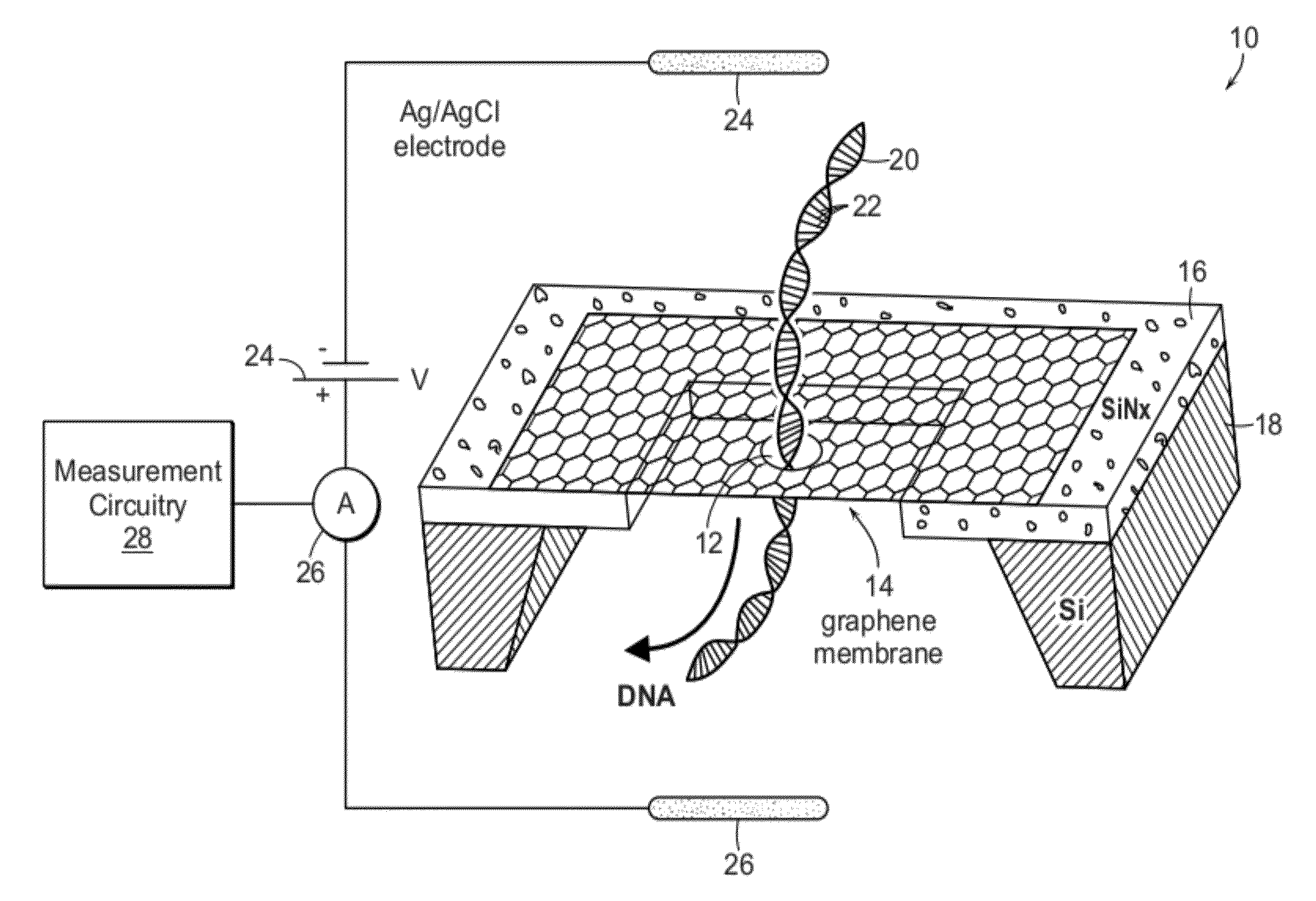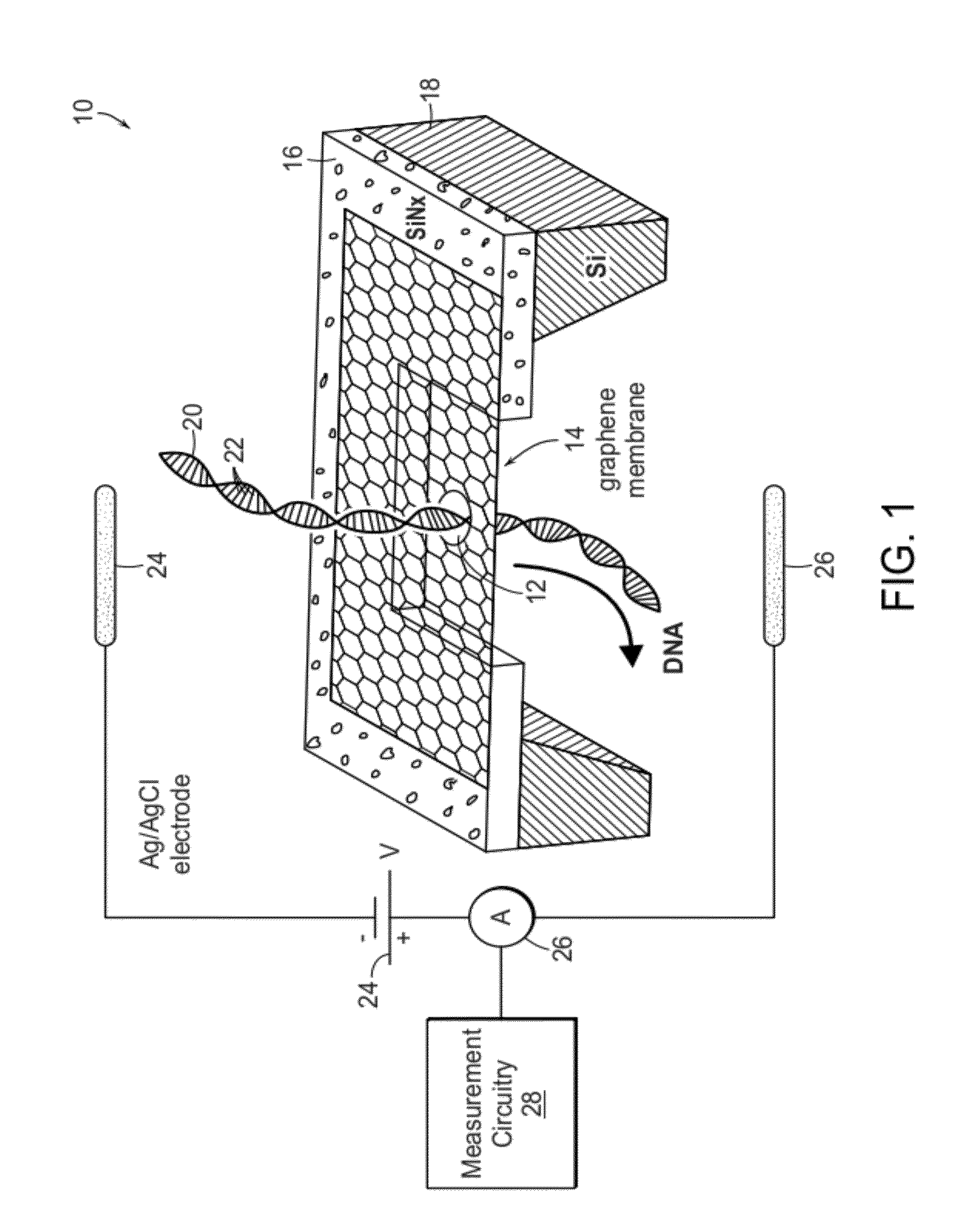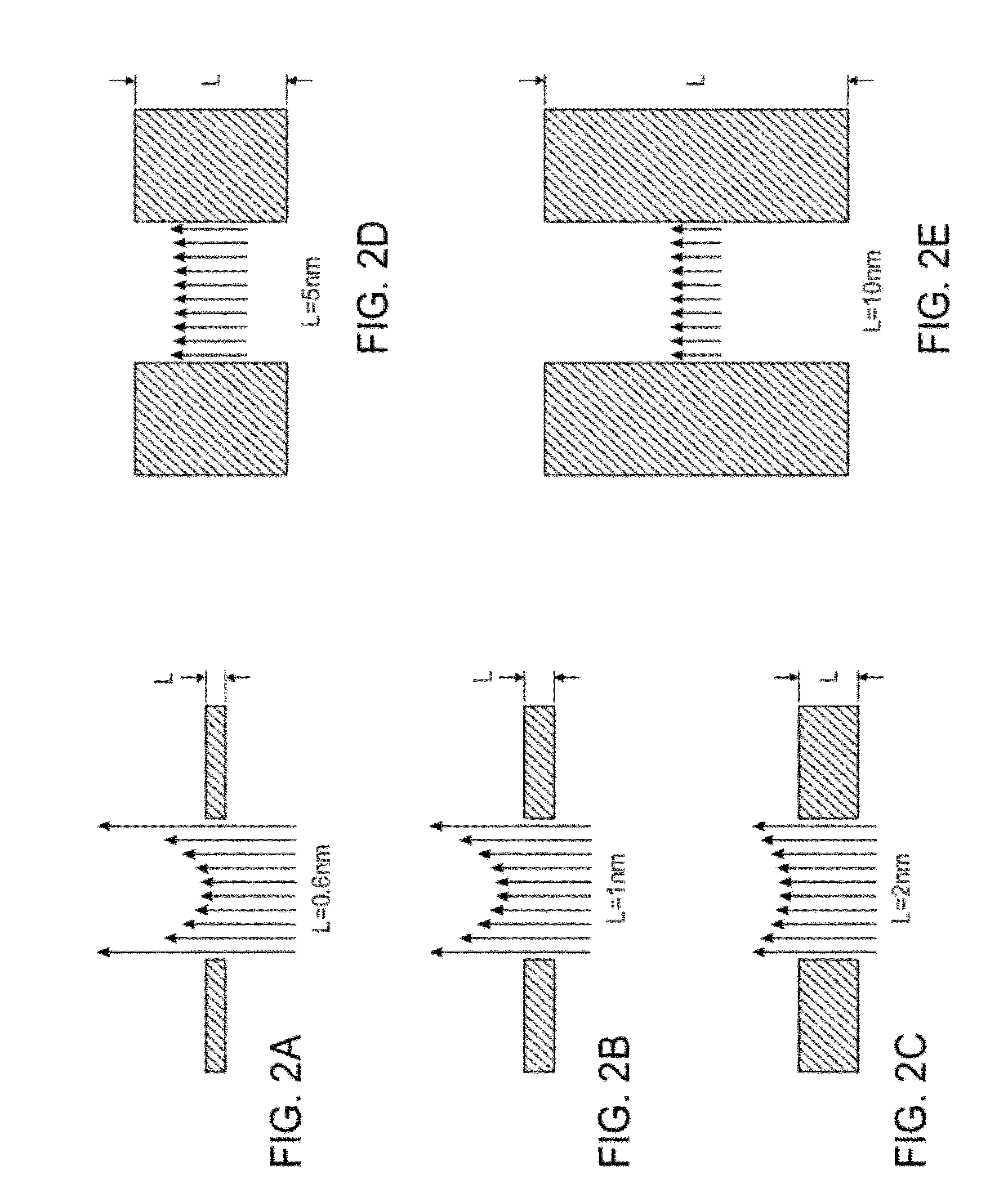Nanometric Material Having a Nanopore Enabling High-Sensitivity Molecular Detection and Analysis
a nanopore and nanometric material technology, applied in the field of nanopore configurations, can solve the problems of limiting the sensitivity and resolution with which molecules in the nanopore can be detected and analyzed, and is difficult to achieve in practi
- Summary
- Abstract
- Description
- Claims
- Application Information
AI Technical Summary
Benefits of technology
Problems solved by technology
Method used
Image
Examples
example i
[0053]This example describes an experimental demonstration of a single-layer, bare graphene membrane. A graphene layer was synthesized by CVD on a nickel surface. The nickel was provided as a film by E-beam evaporation on a silicon substrate coated with a layer of SiO2. The nickel layer was thermally annealed to generate a Ni film microstructure with single-crystalline grains of sizes between about a 1 μm and 20 μm. The surfaces of these grains had atomically flat terraces and steps, similar to the surface of single crystal substrates for epitaxial growth. With this topology, the growth of graphene on Ni grains resembles the growth of graphene on the surface of a single crystal substrate.
[0054]In the CVD synthesis, the Ni layer was exposed to H2 and CH4 gases at a temperature of about 1000° C. Raman spectroscopy, transmission electron microscopy and selected area diffraction studies showed the graphene film to be of excellent quality and mostly (87%) a mixture of one and two layer t...
example ii
[0058]This example describes an experimental determination of the conductance of the single-layer, bare graphene membrane of Example I.
[0059]A chip-mounted single-layer graphene membrane from Example I was inserted between the two half-cells of a custom-built microfluidic cassette made of polyether-etherketone (PEEK). The two sides of the chip were sealed with polydimethylsiloxane (PDMS) gaskets. The opening of the gasket that pressed against the graphene film on the Si / SiNx carrier chip had an inside diameter of ˜100 μm. Consequently, the gasket orifice was smaller than the dimensions of the graphene membrane (0.5×0.5 mm2), and completely sealed off the graphene membrane edge from the electrolyte. On the opposite side of the chip, the electrolyte was in contact with the graphene membrane only through the 200 nm wide square window in SiNx membrane. Note that with this arrangement there was a large area difference between the two graphene membrane faces in contact with the electrolyt...
example iii
[0065]This example describes an experimental determination of the conductance of the single-layer, bare graphene membrane of Example I including a nanopore.
[0066]A single nanometer-sized nanopore was drilled through several of the graphene membranes of Example I using a focused electron beam in a JEOL 2010 FEG transmission electron microscope operated at 200 kV acceleration voltage. The nanopore diameter was determined by EM visualization in a well-spread electron beam so as to keep the total electron exposure of the graphene membrane to a minimum. A nanopore diameter of 8 nm was determined as the average of 4 measurements along different nanopore axes, as determined from calibrated TE micrographs using DigitalMicrograph software (Gatan, Inc.). If the chip or TEM holder had any contaminating organic residue, amorphous carbon was seen to visibly deposit under the electron beam. Such devices were discarded. After drilling the nanopore, the graphene nanopore chips that were not immedia...
PUM
| Property | Measurement | Unit |
|---|---|---|
| diameter | aaaaa | aaaaa |
| diameter | aaaaa | aaaaa |
| diameter | aaaaa | aaaaa |
Abstract
Description
Claims
Application Information
 Login to View More
Login to View More - R&D
- Intellectual Property
- Life Sciences
- Materials
- Tech Scout
- Unparalleled Data Quality
- Higher Quality Content
- 60% Fewer Hallucinations
Browse by: Latest US Patents, China's latest patents, Technical Efficacy Thesaurus, Application Domain, Technology Topic, Popular Technical Reports.
© 2025 PatSnap. All rights reserved.Legal|Privacy policy|Modern Slavery Act Transparency Statement|Sitemap|About US| Contact US: help@patsnap.com



